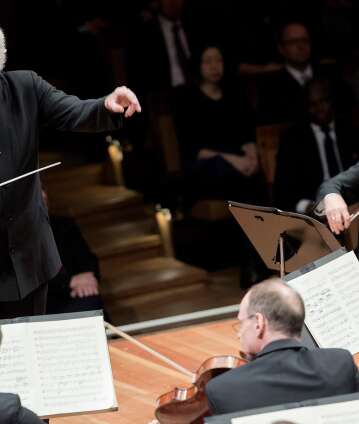Simon Rattle dirige les Symphonies n° 2 et n° 5 de Beethoven

Beethoven a composé sa deuxième symphonie à l’époque du fameux Testament d’Heiligenstadt, dans lequel il exprime son désespoir face à sa surdité croissante. Cela peut expliquer pourquoi, à plusieurs reprises, l’apparente sérénité de l’œuvre bascule dans une manie de vaine agitation. La Cinquième, en revanche, montre un Beethoven prêt à affronter son destin avec une farouche détermination jusqu’à la victoire finale.
Berliner Philharmoniker
Sir Simon Rattle
© 2015 Berlin Phil Media GmbH
Artistes
Nos suggestions
- Simon Rattle dirige les Symphonies n° 4 et n° 7 de Beethoven
- Le premier concert de Simon Rattle à la Waldbühne
- Simon Rattle dirige « Wonderful Town » de Bernstein pour le Concert de la Saint-Sylvestre 2002
- Simon Rattle dirige Mozart et Haydn à Lucerne
- La « Passion selon saint Jean » de Bach avec Simon Rattle et Peter Sellars
- Concert « Late Night » avec Sir Simon Rattle, Magdalena Kožená et Olaf Ott